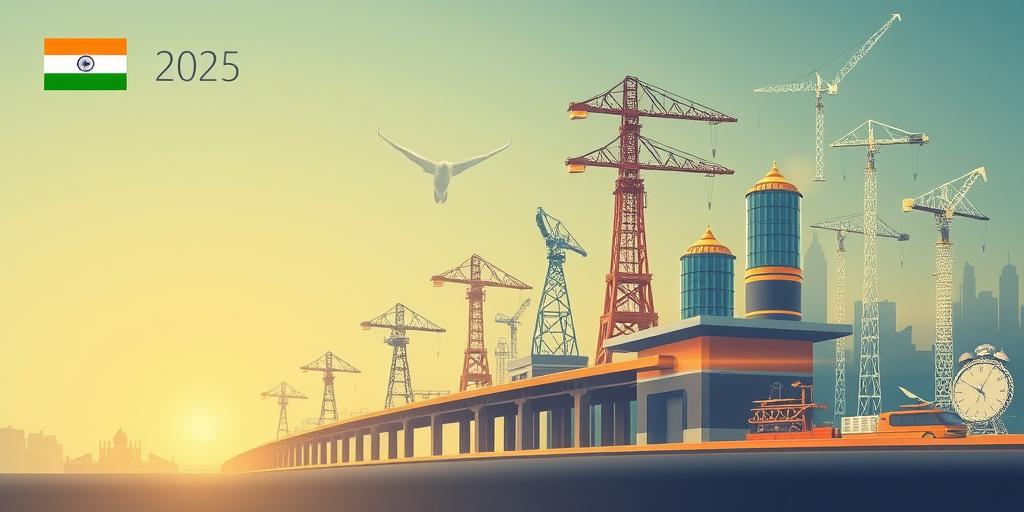India’s Economic Outlook for 2025: Growth Drivers and Key Challenges
India stands as one of the world’s fastest-growing major economies. This analysis dives into the projected economic landscape of India in 2025, examining the primary growth drivers and significant challenges that lie ahead.
Key Growth Drivers
Several factors are expected to fuel India’s economic expansion:
- Demographic Dividend: A young and expanding workforce provides a substantial advantage. As the working-age population increases, so does the potential for higher productivity and consumption.
- Digital Transformation: The rapid adoption of digital technologies, including mobile internet, e-commerce, and fintech, is boosting efficiency, creating new business models, and expanding market access.
- Infrastructure Development: Government investments in infrastructure projects, such as roads, railways, and ports, are enhancing connectivity, reducing logistics costs, and attracting further investment.
- Manufacturing Push: Initiatives like “Make in India” aim to boost domestic manufacturing, reduce reliance on imports, and create jobs.
- Consumption Boom: Rising disposable incomes and changing consumer preferences are driving increased spending on goods and services.
Challenges and Risks
Despite the promising outlook, India faces several challenges that could impact its growth trajectory:
- Global Economic Slowdown: A downturn in the global economy could negatively affect India’s exports and investment flows.
- Inflationary Pressures: Rising inflation could erode purchasing power and dampen consumer demand. Supply chain disruptions and geopolitical tensions could further exacerbate inflationary pressures.
- Fiscal Deficit: Maintaining fiscal discipline is crucial. High levels of government debt could limit the ability to invest in key areas and increase borrowing costs.
- Job Creation: While the economy is growing, creating enough jobs to absorb the expanding workforce remains a challenge. Focus on skill development and vocational training is essential.
- Environmental Concerns: Rapid economic growth can lead to environmental degradation. Sustainable development practices and investments in renewable energy are needed to mitigate these risks.
Sector-Specific Outlook
- Technology: The IT sector is expected to continue its strong performance, driven by demand for digital services and software.
- Manufacturing: Increased government support and infrastructure improvements should boost manufacturing output.
- Agriculture: Modernizing agricultural practices and improving irrigation infrastructure are essential for increasing productivity and ensuring food security.
- Services: The services sector, including tourism, healthcare, and education, is expected to grow steadily.
Policy Recommendations
To capitalize on its growth potential and overcome the challenges, India needs to focus on the following policy priorities:
- Structural Reforms: Implement reforms to improve the ease of doing business, reduce bureaucratic hurdles, and enhance regulatory transparency.
- Investment in Education and Healthcare: Improve the quality of education and healthcare services to enhance human capital and productivity.
- Promote Innovation and R&D: Encourage innovation and research and development to drive technological advancements and create new industries.
- Strengthen Financial Sector: Ensure the stability and efficiency of the financial sector to support investment and economic growth.
- Address Income Inequality: Implement policies to reduce income inequality and promote inclusive growth.
Conclusion
India’s economic outlook for 2025 is promising, with strong growth potential driven by demographic advantages, digital transformation, and infrastructure development. However, addressing challenges such as global economic uncertainties, inflation, and job creation is crucial for sustaining long-term growth. By implementing sound policies and focusing on sustainable development, India can unlock its full economic potential and achieve inclusive and resilient growth.
